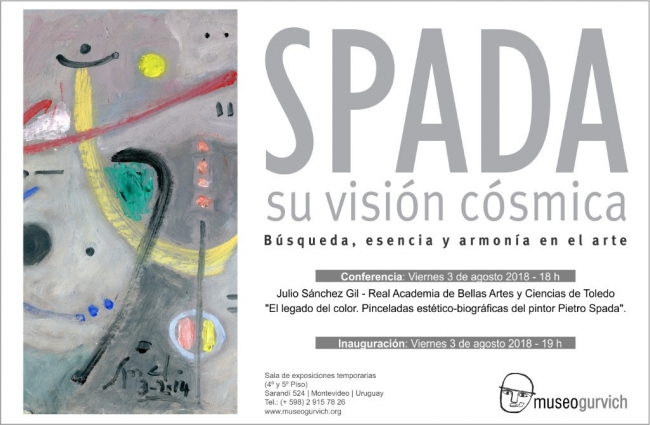ESTEBAN LISA AND PIETRO SPADA: Text for the exhibition "Spada: Su Visión Cósmica" at Gurvich Museum (Montevideo, UY) August-September 2018
Pietro Spada's (1927-2014) master was Esteban Lisa (1895-1983), from Toledo. When Lisa, passionate for art, philosophy and teaching, retired from his job at the post office in 1955, he decided to open the “Four Dimensions” Modern Art School. Lisa had a very philosophical view towards painting. He thought it was not worth judging a painting by its quality of “good” or “bad”, and for this reason he decided to stay out of the art market in Argentina. He considered that painting was the most important and most difficult task of all, because it consisted in the highest form of attaining self-knowledge. Through constant repetition, observation, and synthesis, the painter could establish a dialogue with themselves, recognizing and understanding themselves as unique and creative beings. In order to achieve this, Lisa would take his students to visit the zoo, where they were taught to make sketches of animals. These visits showed clearly in the work of Spada, up until the point where he ended up being able to trace the movements and positions of a deer or a bird in three or four lines. These first steps towards abstraction also brought Spada to adopt a very reductive painting, as thought the brushstrokes and colors almost vanished from the canvas, summed up in an instantaneous act but charged with meaning. Spada understood to perfection the teachings of his master: a search for the exclusively essential.




Comments
Post a Comment